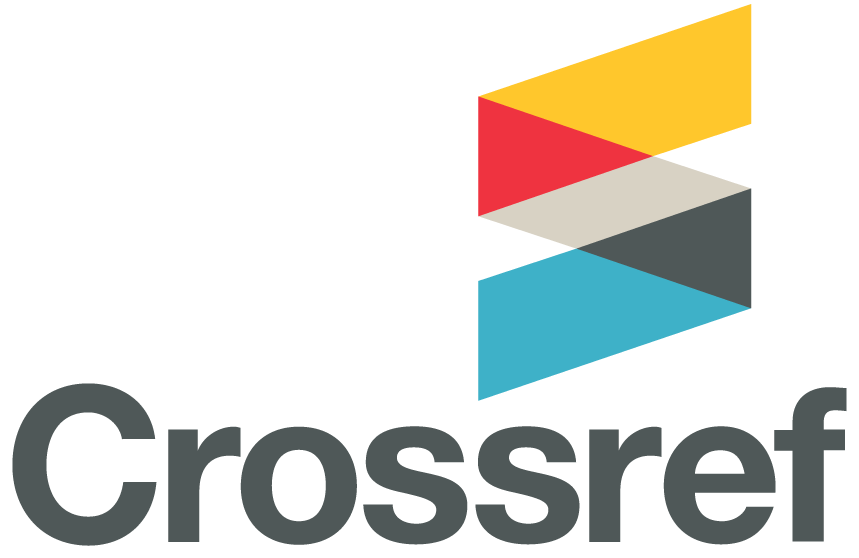Identification of mature and immature (osteoid production) in ossifying fibroma by Tetrachromic verdeluz orange G-acid fuchsin (VOF) stain versus hematoxylin and eosin stain
DOI:
https://doi.org/10.32828/mdj.v18i2.927Keywords:
ossifying fibroma, osteoid, hematoxylin and eosin stain, VOFstainAbstract
Aim of Study: Identification of mature and immature (osteoid production) in ossifying fibroma using histochemical study by hematoxylin and eosin (H&E) and tetrachromic verdeluz orange G-acid fuchsin (VOF) stains.
Materials and Methods: Forty five tissue sections divided into three groups made up the study's data. Twenty portions from the archives, which made up Group 1, exhibited ossifying fibroma, group 2 comprised fifteen psammatoid juvenile ossifying fibroma sections and group 3 comprised ten section of trabecular juvenile ossifying fibroma. Each block was divided into two 5 m sections, with one section stained with hematoxylin and eosin (H & E) and the other with the tetrachromic Verde Luz-orange G-acid fuchsin (VOF). Histomorphometric examination of tissues is based on quantitative measurements of microscopic osteoid production and has been used to provide information on tissue pathology in these lesions
Results: The results showed female predominance in OF cases comprising (70.0%).Whereas male predominance found in psammatoid and trabecular juvenile ossifying fibroma comprising (60.0%), (70.0%) respectively .Ossifying fibroma and juvenile ossifying fibroma were distributed between the maxilla and mandible in the following ways: (65.0%) of OF were in the mandible, (73.3%) of PsJOF were in the maxilla, and (60.0%) of TrJOF were in the mandible. By using ANOVA test however the result non-significant OF show high mean value OF osteoid followed by PsJOF then TrJOF in conventional H&E while in VOF stains PsJOF showed high mean value followed by OF and finally TrJOF. Using paired t-test H&E showed a high mean values of osteoid in OF, TrJOF and PsJOF, compared to VOF stain, however statistically non-significant compared mean value of osteoid between H&E stain and VOF in TrJOF there was a border line significant (0.055).
Conclusion: Our awareness of these lesions and our ability to distinguish and identify them is improved by a study of the histological characteristics of ossifying fibroma and its subtype. H&E staining necessitates numerous steps, whereas VOF only needs one step.
References
Gulati, A., Rao, N. N., & Radhakrishnan, R. A. Fibrous dysplasia and ossifying fibroma-an advent in their diagnosis. Journal of Clinical and Experimental Dentistry, 2011. 3(4), 297-302. https://doi.org/10.4317/jced.3.
Smith SF, Newman L, Walker DM, Papadopoulos H. Juvenile aggressive psammomatoid ossifying fibroma: an interesting, challenging, and unusual case report and review of the literature. J Oral Maxillofac Surg. 2009 Jan;67(1):200-6. doi: 10.1016/j.joms..12.009. PMID: 19070769
Dhouskar S, Tamgadge S, Tamgadge A, Periera T, Mudaliar U, Pillai A. Comparison of Hematoxylin and Eosin Stain with Modified Gallego's Stain for Differentiating Mineralized Components in Ossifying Fibroma, Cemento-ossifying Fibroma, and Cementifying Fibroma. J Microsc Ultrastruct. 2019 Jul-Sep;7(3):124-129. doi: 10.4103/JMAU.JMAU_2_19. PMID: 31548923; PMCID: PMC6753700.
Mohan RP, Verma S, Singh U, Agarwal N. Cementifying fibroma. BMJ Case Rep. 2013 Jul 12;2013:bcr2013009900. doi: 10.1136/bcr-2013-009900. PMID: 23853018; PMCID: PMC3736223
Mergoni G, Meleti M, Magnolo S, Giovannacci I, Corcione L, Vescovi P. Peripheral ossifying fibroma: A clinicopathologic study of 27 cases and review of the literature with emphasis on histomorphologic features. J Indian Soc Periodontol. 2015 Jan-Feb;19(1):83-7. doi: 10.4103/0972-124X.145813. PMID: 25810599; PMCID: PMC4365164..
Smith SF, Newman L, Walker DM, Papadopoulos H. Juvenile aggressive psammomatoid ossifying fibroma: an interesting, challenging, and unusual case report and review of the literature. J Oral Maxillofac Surg. 2009 Jan;67(1):200-6. doi: 10.1016/j.joms..12.009. PMID: 19070769.
Blair HC, Larrouture QC, Li Y, Lin H, Beer-Stoltz D, Liu L, Tuan RS, Robinson LJ, Schlesinger PH, Nelson DJ. Osteoblast Differentiation and Bone Matrix Formation In Vivo and In Vitro. Tissue Eng Part B Rev. 2017 Jun;23(3):268-280. doi: 10.1089/ten.TEB.2016.0454. PMID: 27846781; PMCID: PMC5467150
El-Mofty SK. Fibro-osseous lesions of the craniofacial skeleton: an update. Head Neck Pathol. 2014 Dec;8(4):432-44. doi: 10.1007/s12105-014-0590-0. Epub 2014 Nov 20. PMID: 25409854; PMCID: PMC4245413..
Weerasinghe HGRN, Wijesuriya PC, Jayasooriya PR. Juvenile ossifying fibroma: an analysis of clinico-pathological features in a case series with a literature review. Journal of Diagnostic Pathology. 2016;11(2):14–21. DOI: http://doi.org/10.4038/jdp.v11i2.7705
Sarasquete C, Gutiérrez M. New tetrachromic VOF stain (Type III-G.S) for normal and pathological fish tissues. Eur J Histochem. 2005 Apr-Jun;49(2):211-27. PMID: 15967749..
Kunche A, Kiresur MA, Ananthaneni A, Guduru VS, Puneeth HK, Bagalad B. Comparison of verdeluz orange G and modified Gallego stains. Biotech Histochem. 2017;92(8):547-551. doi: 10.1080/10520295.2017.1341058. Epub 2017 Nov 21. PMID: 29161180.
Mintz S, Velez I. Central ossifying fibroma: an analysis of 20 cases and review of the literature. Quintessence Int. 2007 Mar;38(3):221-7. PMID: 17333999.
Mouselhya, Yara Y.. “Comparative immunohistochemical study on Osteocalcin expression in fibrous dysplasia and ossifying fibroma.” International Journal of Approximate Reasoning 5. 2012: 9-13.
Downloads
Published
Issue
Section
Categories
License
Copyright (c) 2022 Mustansiria Dental Journal

This work is licensed under a Creative Commons Attribution 4.0 International License.
The Journal of Mustansiria Dental Journal is an open-access journal that all contents are free of charge. Articles of this journal are licensed under the terms of the Creative Commons Attribution International Public License CC-BY 4.0 (https://creativecommons.org/licenses/by/4.0/legalcode) that licensees are unrestrictly allowed to search, download, share, distribute, print, or link to the full texts of the articles, crawl them for indexing and reproduce any medium of the articles provided that they give the author(s) proper credits (citation). The journal allows the author(s) to retain the copyright of their published article.
Creative Commons-Attribution (BY)








